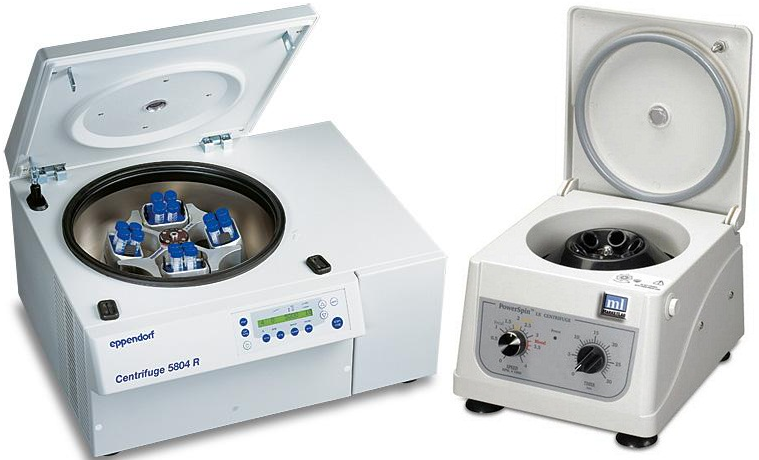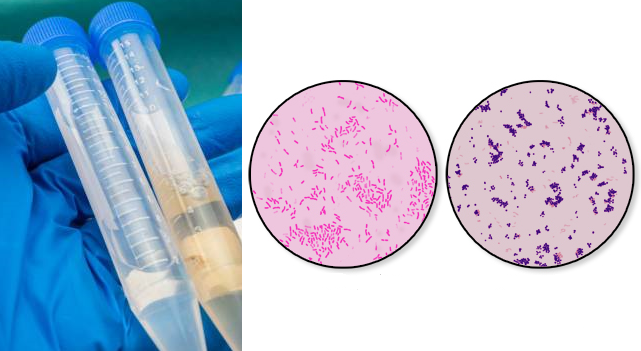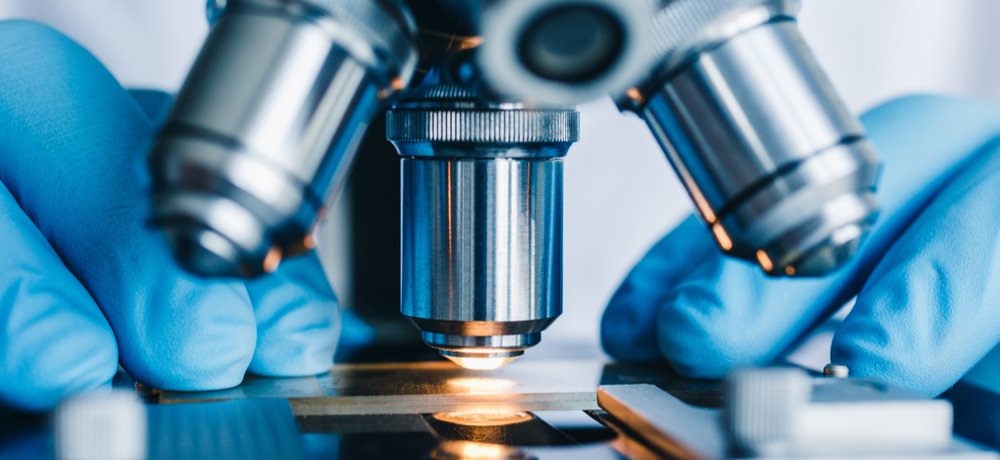Centrifuge is an instrument is used to separate suspensions or particulate matter in a liquid based on their different sedimentation properties or densities. The centrifuge machine is generally used in the microbiology laboratory to sediment or separate different macromolecules (especially particulate matter) in a solution. Liquid specimens such as urine and blood can be spinned or centrifuged using the centrifuge machine (Figure 1). Centrifuge separates solutions into two basic forms known as the supernatant and sediment. The supernatantis decanted fromthe tube to obtain the sediment or deposits found at the bottom of the tube. To separate a given solution into their different components (i.e. supernatant and sediment), the solution is dispensed into a tube before it is placed in the centrifuge machine which carries out the actual separation process. After separation, the supernatant (which is in liquid form) is usually above the sediment or pellets which always stays at the bottom of the tube because of its higher molecular weight.

This process of separating the components of a solution into different parts using the centrifuge is known as centrifugation. Centrifugation occurs under a centrifugal force- which causes the particulate matter in the solution being centrifuged to move in an outward direction and towards the bottom of the tube containing the liquid while the supernatant remains above it. During centrifugation, more massive particles sediment faster than less massive particles; and tubes containing the experimental sample must always be of equal volume. Centrifugation occurs in different revolutions and periods; and this is usually expressed as revolutions per minute (r.p.m), and with the unit revs min-1. There are different types of centrifuge machine, and each performs different functions. Some of the basic components of a simple centrifuge machine include: a metallic-driven rotator or rotor, centrifuge lid or cover, tube, power source, speed controller and time controller.
MAINTENANCE/CARE OF THE CENTRIFUGE
- Always read the owner’s manual before operating the centrifuge machine.
- Keep the machine clean always, and ensure that spilled liquid is properly cleaned off.
- Always abide by the mass and speed levels or limits of each rotator and/or centrifuge when spinning experimental samples.
- Tubes containing the experimental sample must be properly balanced prior to spinning. Improperly balanced tubes can damage the centrifuge machine during centrifugation.
- After centrifugation, allow the rotator to stop before opening the centrifuge lid.
- After centrifugation, clean the rotors and tube properly using disinfectant and dry towel.
- Consult the laboratory technician when any problem arises.
REFERENCES
Beck R.W (2000). A chronology of microbiology in historical context. Washington, D.C.: ASM Press.
Cheesbrough, M (2006). District Laboratory Practice in Tropical countries Part I Cambridge
Chung K.T, Stevens Jr., S.E and Ferris D.H (1995). A chronology of events and pioneers of microbiology. SIM News, 45(1):3–13.
Dictionary of Microbiology and Molecular Biology, 3rd Edition. Paul Singleton and Diana Sainsbury. 2006, John Wiley & Sons Ltd. Canada.
Glick B.R and Pasternak J.J (2003). Molecular Biotechnology: Principles and Applications of Recombinant DNA. ASM Press, Washington DC, USA.
Goldman E and Green L.H (2008). Practical Handbook of Microbiology, Second Edition. CRC Press, Taylor and Francis Group, USA.
Madigan M.T., Martinko J.M., Dunlap P.V and Clark D.P (2009). Brock Biology of microorganisms. 12th edition. Pearson Benjamin Cummings Publishers. USA.
Nester E.W, Anderson D.G, Roberts C.E and Nester M.T (2009). Microbiology: A Human Perspective. Sixth edition. McGraw-Hill Companies, Inc, New York, USA.
Prescott L.M., Harley J.P and Klein D.A (2005). Microbiology. 6th ed. McGraw Hill Publishers, USA. Willey J.M, Sherwood L.M and Woolverton C.J (2008). Harley and Klein’s Microbiology. 7th ed. McGraw-Hill Higher Education, USA.
Discover more from Microbiology Class
Subscribe to get the latest posts sent to your email.




